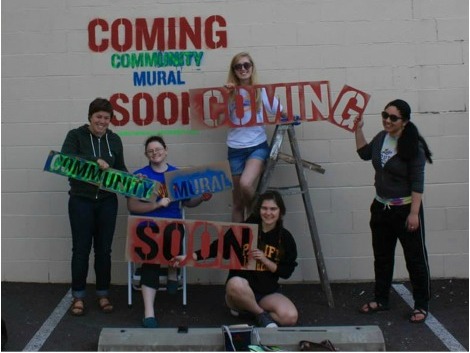Page 72 • (1,227 results in 0.02 seconds)
-
science minor. Statistics (STAT) - Undergraduate Courses STAT 145 : Statistics for Biologists - QR An introduction to statistics with a focus on topics and data relevant to biologists. Descriptive statistics and data representations, correlation and regression, experimental design, basic probability, binomial and normal distributions, confidence intervals, hypothesis testing, chi-squared test, ANOVA. Cross-listed with MATH 145. Prerequisite: MATH 140 or proficiency through MATH 140 as determined by
-
The Role of Computer Science in Liberal Arts Education & SocietyComputer Science integrates three fundamental processes: theory (from mathematics), abstraction (based on the scientific method), and design (from engineering) [1]. The problem solving perspectives emphasized in CS provide important mental models for addressing problems in many disciplines. This is sometimes called “algorithmic thinking” or “computational thinking.” As described by Walker et. al., “methodologies within computer
-

project also has received funding from ASPLU and independent donors. Top: Volunteers prime the wall on April 26. Above: a sketch of the proposed mural design. Carly Brook, grant writer for the mural project, said the students appreciate every donation that has made this project a reality.“The Pierce County Arts Commission grant was meaningful because it shows one of the ways that civic society is investing in community artwork,” Brook said. “And we are grateful to generous individuals who gave what
-

Discovery ‹ Resolute Online: Winter 2016 Home Features What Was/Is It Like To Be… The Call Design School Open to Interpretation Attaway Lutes Welcome Note Setting The Course On Campus Discovery Research Grants Accolades Lute Library Blogs Alumni News Homecoming 2016 Connection Events Lute Recruit Alumni Profiles Class Notes Family and Friends Mike Benson Submit a Class Note Calendar Highlights Home Features What Was/Is It Like To Be… The Call Design School Open to Interpretation Attaway Lutes
-
Graduate College of Health Professions DNP,Nurse Executive,DNP/MBA, Theatre Theatre Program Details major & minor Undergraduate College of Professional Studies theater,musical,acting,directing,playwriting,improvisation,technical,design,stage,lighting,drama,actor,thespian,improvisation,performance,perform Sociology Sociology Program Details major & minor Undergraduate College of Liberal Studies society,diversity,social justice,research,direct transfer agreement,transfer friendly,direct transfer,transfer
-
University with a B.F.A. in photography and an emphasis on photojournalism. John mostly spent his working life as a photojournalist with newspapers or news agencies. Simon Sung, executive creative director Simon Sung graduated in 1990 from the University of Washington. During his tenure in the design field he has worked for various clients including Simon and Schuster, Random House, Crown, Disney, Chronicle Books, Starbucks and the National Baseball Hall of Fame in Cooperstown. Lace M. Smith, associate
-

debt for a fraction of the cost and helps folks run crowdfunding campaigns to settle their medical debt. For Young, part of the appeal of working with RIP Medical Debt was the work the organization is doing in Washington and nearby states. “They own about 15k of debt in Washington and significantly more in Idaho and Montana, so we are working to raise money to settle as much of this as possible,” Young says. Young’s students worked with a representative from the RIP Medical Debt to design a social
-
and their families, and the employee affinity groups that strengthen and support our diversity. The U.S. Department of State is committed to the principles of diversity, equity, inclusion, and accessibility for our employees, in the conduct of diplomacy, and in serving the American people. A diverse workforce is a national security asset. STEM professionals are critical to safeguarding our facilities, information, and people. They manage the design, construction, operation, and maintenance of more
-
experimental and computational researchers, drawing on UNT’s world-class resources in both instrumentation and high-performance computing. Possible research areas include: Light-Harvesting Organic/Metal-Organic Materials * Computational Catalyst Design * Transition Metal Catalysis for Organic Synthesis * Electrochemical Characterization of Semiconductor Materials * Porous Materials for Environmental Remediation * Gas-Sensing Materials * Pharmacological Modeling of Illicit Substances * Organometallic
-

. Each work begins with a process of my design that is put into the hands of an external agent to create a visual exploration of my own narrative of anxiety, control, sexuality, and identity. Each piece ultimately represents an act of risk in ceding control of my designs and their physical expressions to another; another object, another material, another act of vulnerability.”Support for this exhibition was provided by the Pacific Lutheran University School of Arts and Communications Professional
Do you have any feedback for us? If so, feel free to use our Feedback Form.


